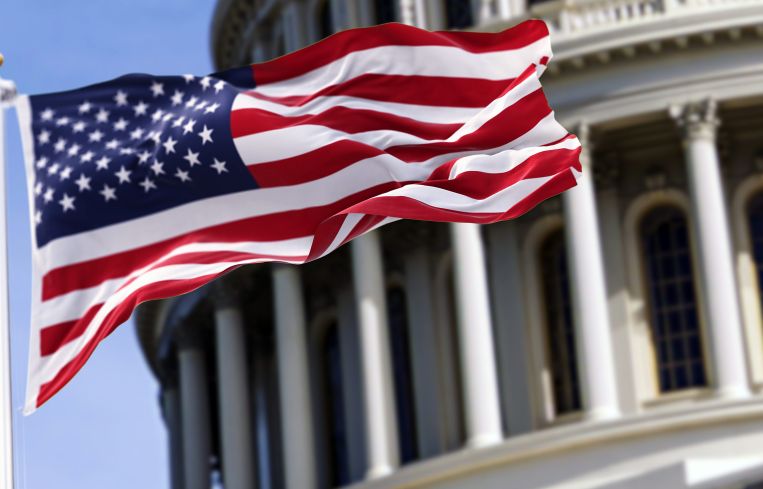Presented By: Future of Series presented by JPMorgan Chase
Promising Developments in the Affordable Housing Space
Future Of Affordable Housing, Presented by JPMorgan Chase
By Future of Series presented by JPMorgan Chase September 27, 2021 8:00 am
reprints
The pandemic’s rise in housing costs has exacerbated the country’s dearth of affordable housing. However, there are signs of hope, thanks to new public and private resources.
Partner Insights spoke with Alice Carr, head of Community Development Banking at JPMorgan Chase, to learn where affordable housing stands today and what exciting developments are on the horizon.

Commercial Observer: Last year, JPMorgan Chase pledged $30 billion to support racial equity, including $14 billion toward the preservation and development of affordable housing. How has the pledge affected your affordable housing efforts?
Alice Carr: Even before JPMorgan Chase made this pledge, we were looking at affordable housing as an important tool toward creating racial equity. The formal commitment has certainly allowed additional resources to buildout new capital towards affordable and workforce housing development. We provide affordable housing in a number of ways, and a bulk of the commitment comes by way of providing financing for workforce housing that is naturally affordable.
We developed an innovative program with interest rate reductions to encourage landlords to keep rents stable and maintain affordability. My direct group focuses on financing the development of new affordable units restricted to serving low-income individuals and families. I’m proud of the firm for consistently investing resources in this business, which has grown threefold over the last decade.
Tell us about JPMorgan Chase’s work in affordable housing.
Almost every unit we finance in community development banking serves individuals earning 60 percent or less of the area median income (AMI). These projects may support a single mother’s first apartment or take someone who has been living in a car and put them in affordable housing. Almost everything we’ve done has been in a public-private partnership, where we bring the conventional capital to the table, and the federal Low Income Housing Tax Credit (LIHTC) subsidy fuels the project.
Not everything we work on is affordable housing though — we think a healthy, thriving community takes so much more.
We are large investors in New Markets Tax Credits (NMTC) as well as having a pretty robust platform of lending to community development financial institutions, which are primarily nonprofit loan funds. These CDFIs are doing work on the ground in communities that we feel are extremely important to support.
As part of our racial equity commitment, we also created a special purpose credit program, where our NMTC investment dollars go toward racial equity projects, which we’ve defined as Black-owned, Black-led, and Black-serving organizations. We’ll focus a portion of our annual investment on racial equity projects, where we pay a premium for those credits, which means we profit-share, for lack of a better term, with the project because of the high impact they’re having in Black communities. The additional premium we pay for the tax credits translates to anywhere from $100,000 to $500,000 of additional cash into the project for high-impact purposes, such as charter schools or mental health clinics in underserved areas or grocery stores in food deserts.
One project in Washington, D.C., is just crossing the financing finish line — a birthing center attached to an existing medical center. In Washington, D.C., the delivery risks for Black women having babies are much higher than in other communities, and so they’re building a state-of-the-art birthing center to radically change those outcomes.
In his infrastructure package, President Biden proposed $213 billion for affordable housing. What are some aspects of that proposal you find most promising?
We were really excited to see housing identified as infrastructure for the first time. That’s a major step for affordable housing. The proposals for affordable housing underscore how housing is a linchpin for successful communities and for economic and community development. The proposal for additional funds will expand current, successful programs like LIHTC and community development block grants and home grants.
There are also innovative proposals around the ‘missing middle’, putting funding toward housing not just for 60 percent AMI earners and less, but for those in the 60 to 100 percent AMI who also struggle to find affordable housing close to their jobs. This federal commitment will also leverage state and local resources to spur additional resources to develop affordable housing.
And how have government entities overall — whether federal, state or local — been good partners for JPMorgan Chase’s affordable housing efforts?
They’re super important partners for us. We work closely with city and state governments across the country. While the LIHTC is a federal subsidy, it is administered by the states, and there are often state and local sources contributed as well.
A good example of a state that is prioritizing housing is California, which recently made an unprecedented financial commitment of over $10 billion to housing over the next few years. These sources will allow current projects to move forward and create resources for additional projects that JPMorgan Chase will help finance.
What effect do you think the entry of companies like Apple and Amazon into the affordable housing space will have on the development of affordable housing in the U.S.?
It has certainly elevated the visibility of affordable housing as an issue. We’ve seen gaps in affordable housing get filled with money from these tech companies. They may not be driving the development, but, in some cases, they’re the final piece in getting a project across the finish line.
We’ve also recently seen hospitals and the health care industry play an expanded role in the development of affordable housing. When you’ve got government and business working together, we can accomplish so much more.
How will this affect JPMorgan Chase’s efforts in this area?
We have been in conversations with these companies. We get a lot of calls from new entrants asking what we are doing in this space. What does the industry need? What are the opportunities? What are the risks? Some of these companies are creating their own in-house affordable housing expertise, and some are looking to players like JPMorgan Chase to help them figure out the best place for their resources.
Over the past year, the country has suffered significant supply chain issues and labor shortages. How have these affected JPMorgan Chase’s efforts to develop affordable housing?
We’ve seen a real increase in construction costs, which translates into financing delays for projects and cost increases due to labor shortages. These increases in construction costs mean fewer deals get done, because there’s only so much public subsidy to fill those gaps.
Can you quantify how much of an impact JPMorgan Chase hopes to make in the affordable housing arena over the next 5 to 10 years?
We are on a growth trajectory for affordable housing lending. As just one example, over the last seven years, we’ve taken our construction lending business from a $1 billion business to a $3 billion business, and we expect to continue to grow at a similar rate.
Our other community development financing solutions are on a similar growth trajectory. We’re looking to develop more tools for various types of government subsidies outside the LIHTC sphere. JPMorgan Chase has always been a major player in this industry. We expect to maintain that position going forward.
View more articles on affordable housing here.


